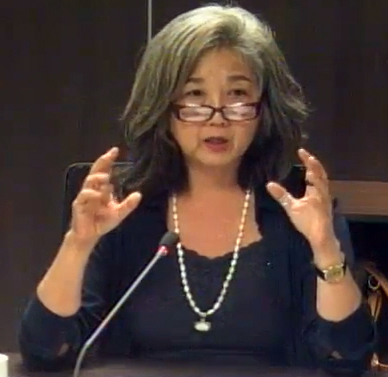16 years of the Lei Maria da Penha and many challenges present: data collection, effective public policies, access to protection services and humanized care

In August, the Lei Maria da Penha (Maria da Penha Law) turned 16 years old. The data on violence against women are still shocking and revolting. According to a study released in March this year by the Brazilian Forum for Public Safety, every seven hours a woman is a victim of feminicide in Brazil and every 10 minutes a woman is raped. Another study released in October 2021 also by the Forum and the United Nations Children’s Fund (UNICEF) showed that every 20 minutes a girl was raped in Brazil between 2017 and 2020. The act constitutes the crime of rape of a vulnerable person.

We interviewed the Executive Director of the Patrícia Galvão Institute, Jacira Melo, and the Director of Content and Editor-in-Chief, Marisa Sanematsu, who talked to the Beja Institute about the advances achieved in these years, such as the definition of the five forms of domestic violence, and the challenges to be faced in order to change this harsh reality, such as the implementation by the Brazilian State of a public policy to combat violence against women, greater access to protection services in remote locations, trained professionals, and humanized care. Check out the complete interview below.

1) In 2006, you helped create the Maria da Penha Law through data on violence against women that the Patrícia Galvão Institute gathered. What are the main advances achieved during these 16 years?
In the first semester of 2006, the Patrícia Galvão Institute launched the opinion poll “Perceptions of Impunity for Violence against Women”, carried out in partnership with Ibope and supported by Unifem and Ford Foundation. This survey already revealed that 51% of respondents knew at least one woman who was assaulted by her partner. And three out of four respondents considered that the penalties applied in cases of violence against women were irrelevant and that justice treated this drama experienced by women as a minor issue. At the time, federal deputy Jandira Feghali, who was the rapporteur of the Maria da Penha Law project in the House, adopted the data from this public opinion poll to debate and dialogue in all regions of the country about the importance of having a legislation that would protect Brazilian women. Thus, the Maria da Penha Law was sanctioned on August 7th, 2006.
In these 16 years of the Maria da Penha Law, there have been many advances. For example, the law defined the five forms of domestic violence. Before, people thought of domestic violence only as physical violence that leaves visible marks. Today this view still persists among some people, but most people now have a broader view of domestic violence and know that it can manifest itself in different ways, also as psychological, moral, patrimonial, and sexual violence. The Maria da Penha Law defines the obligations and responsibilities of the public sectors in preventing violence, assisting and protecting women, and holding the aggressors accountable. Some are more or less advanced in the implementation of their policies. In the case of the Judiciary, we can highlight the emergency protective measures and the creation of the Courts for Domestic and Family Violence against Women, which have the competence to judge civil (family) and criminal cases. Although still restricted to large cities, these courts contribute to reduce the barriers that women in situations of domestic violence face in accessing justice.
2) In these two decades of activities of the Patrícia Galvão Institute, you have become a national and international reference in the defense of women’s rights through communication and advocacy actions in the public debate, such as conducting opinion polls, producing content, and promoting events and campaigns to encourage social reflection and demand answers from the State and/or changes in society and the media. What are the main challenges today to achieve reliable data on violence against women and also to raise awareness among public authorities?
The challenges are on several fronts, beginning with the collection and recording of data by public agencies – health, public safety, and justice – which must include training of professionals from these services to fill out and register in the databases, which should adopt a common nomenclature so that the records feed a national database on violence against women that is transparent and accessible to all of society. But it is necessary to go beyond the so-called administrative data, which are generated by these organs and public services, and invest in academic research and also in studies produced by civil society organizations, to enable data collection for deeper analysis and with specific clippings, because many forms and victims of gender violence remain invisible. Unfortunately, due to lack of political commitment and investments, we are still far from capturing the reality of the diverse ways and contexts in which violence against women occurs in Brazil.
3) Besides the Women’s Police Stations, today there are new tools to request protective measures, such as the Maria da Penha Virtual application, the telephone 197 or the option to go to a public defender’s office. There has been a significant increase in denunciations with these remote resources and with the alternative of the public defender’s office?
All these tools that make it quicker and easier for victims to find help are very important. Even before the Covid-19 pandemic it was already known that many women who live in violent relationships feel fear and are also controlled and watched. Moreover, we also know that there are few services to attend these women: only 7% of Brazilian municipalities have women’s police stations, and they are concentrated in the capitals and big cities. We still don’t have numbers to prove that there has been an increase in denunciations as a direct result of these new technologies, but they are certainly contributing for more women to seek help to get out of this cycle of domestic violence. As for the public defenders, since 2006, the Maria da Penha Law determines that the victims of domestic violence have the right to be accompanied by the public defenders in all legal matters related to the process of domestic violence. The public defender’s offices also have centers to assist women in situations of violence that are prepared to guide and assist these women in all of their demands.
4) In 2021, on average, every seven hours a woman was a victim of feminicide in Brazil, according to data from the Brazilian Public Safety Forum. The number is shocking. What are the main challenges faced today to reduce the cases of violence against women and feminicides?
First, it is necessary to start from the understanding that feminicides are, in their majority, “announced deaths”. And the main challenges in confronting feminicide are well known, that is, the implementation by the Brazilian State, at the different levels – federal, state and municipal – of a public policy to confront violence against women. The Maria da Penha Law is exemplary, but its application still falls short of the needs of Brazilian women who live in different contexts and are living under domestic violence, alone, often isolated, sleeping next to an aggressor who often carries a gun. The opinion poll on feminicide conducted by the Patrícia Galvão Institute in 2021 shows that domestic violence and the risk of feminicide haunt the daily lives of Brazilian women: 30% of women have already received death threats from a partner or ex partner, and 7% said they had already been threatened by more than one partner. It draws attention that, among the women who have already suffered death threats from their current or ex-partner, more than half said they have also suffered attempted feminicide. These data reinforce the importance of threats being taken seriously, both by the woman and by the authorities when the woman makes a complaint. Hence the urgency of implementing more specialized assistance services throughout the country. But it is not enough just to have more services, it is necessary to have sensitized and trained professionals to provide a correct and humanized service for women who are experiencing domestic violence.
5) Among the recent achievements of the Maria da Penha Law is the fact that in April this year it can also be applied in cases of aggression against transsexual women. The decision is unprecedented in a higher court and can guide future analysis of similar cases in lower courts. Are there other new developments under discussion? What still needs to be improved, to be addressed?
When the Maria da Penha Law was created, some courts resisted its application, alleging that it was unconstitutional because it treated men and women differently. This issue was only pacified six years later, when the STF (Federal Supreme Court) defined that Law 11.340 was constitutional, because there is a serious and evident inequality of power between the sexes, which makes women much more vulnerable to domestic violence. However, even today we see magistrates insensitive to violence against women, and even more so in the case of violence against trans women. From this decision in June of this year, it is expected that it will in fact guide the decisions of the courts, but it will be necessary to work hard to overcome the resistance of this sector of the Judiciary that refuses to accept that transgender women are also more vulnerable to domestic violence, besides being at greater risk of feminicide, both in the domestic context and on the streets, due to transphobia, including by police officers.
6) How each one of us can collaborate in our daily lives for this very fundamental agenda, which is the reduction of violence against women and the protection of their rights?
In order to realize rights, it is necessary to have a political and social commitment to implement protection and shelter services for women in situations of violence and the threat of feminicide. Even today, one of the main barriers faced is the insufficiency of services to meet the demand from women – either to expand the capacity of existing services or because of the need to create more specialized services. At the same time, it is fundamental to talk about domestic violence in schools, that is, to incorporate in the curricula several actions that promote awareness for an effective social and cultural transformation that promotes, through information and debate, the replacement of violence by dialogue as a way to solve conflicts, respect for differences, and the search for gender equality.